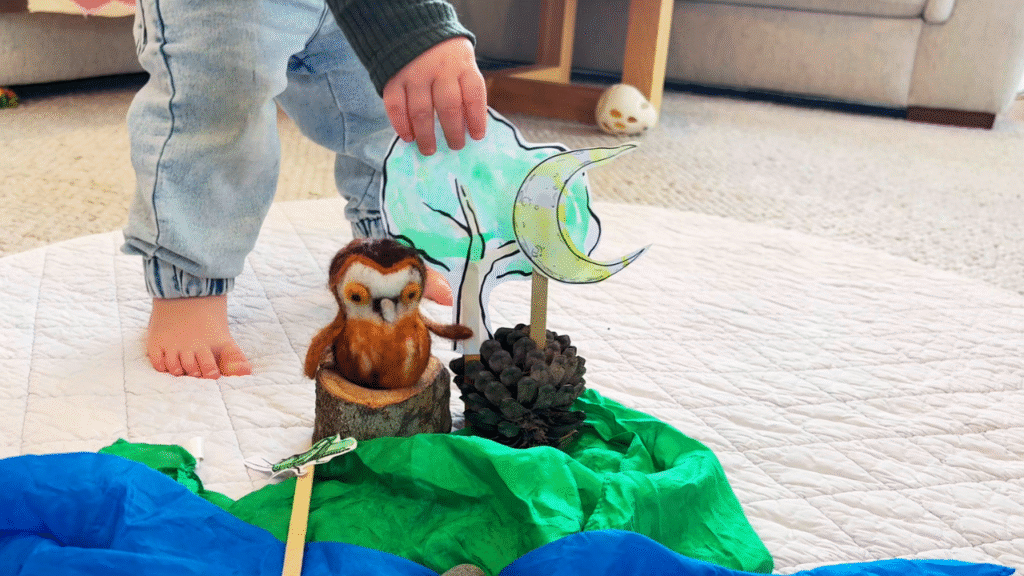
Storytelling is at the heart of the Waldorf tradition. Long before little ones can read, stories connect them to rhythm, imagination, and nature. But for toddlers – who are full of movement, curiosity, and wonder -storytelling can sometimes feel abstract. That’s where props come in.
In this post, I’ll show you how to bring stories to life for toddlers using Waldorf-inspired props, including handcrafted puppets, simple printables, and treasures from nature. You’ll also see how this practice can anchor your weekly rhythm, inspire creativity, and help your child connect deeply to seasonal flow.
Why Waldorf Storytelling Matters in Early Childhood
Stories are more than entertainment. They form a foundation for language, imagination, and emotional growth. In Waldorf education, storytelling is an art that meets the child at their stage of development. For toddlers, stories are:
- Simple: short narratives with repetition and gentle rhythms.
- Nature-based: featuring animals, plants, and natural cycles.
- Connected to daily life: familiar objects, simple actions, and a touch of magic.
By adding props, you can take this experience from something they hear – to something they see and feel.
The Magic of Props in Waldorf Storytelling
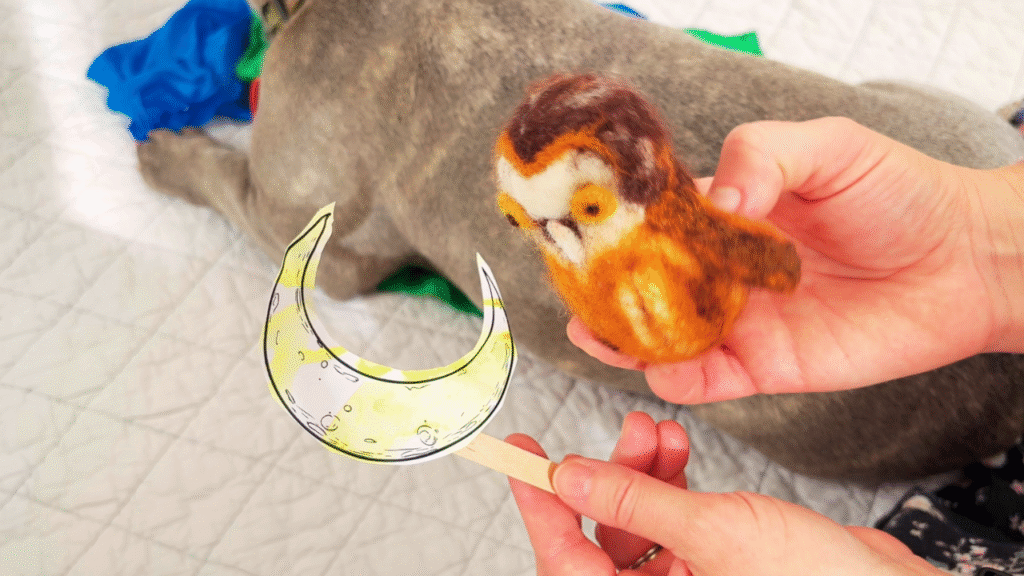
Props don’t need to be elaborate. In fact, the simpler, the better. Children’s imaginations fill in the gaps. When you add a felted puppet, a painted stone, or a pinecone to your story, it gives toddlers a visual anchor to hold onto.
Props help:
- Focus attention: young children stay engaged longer when there’s something tangible to watch.
- Deepen connection: props make abstract ideas (like an owl under the moon) more relatable.
- Invite play: once the story is done, the props often become part of your child’s free play.
This is exactly how to bring stories to life for toddlers using Waldorf-inspired props – by letting objects carry the magic of the tale into their hands and imagination.
Choosing Waldorf-Inspired Story Props
There are three beautiful ways to gather props for storytelling at home:
1. Handcrafted Props
Handcrafts carry a warmth that children feel. For example, I recently needle-felted a small owl to star in our story. It’s soft, earthy, and imperfect in the best way. Other ideas:
- Felted animals (owl, mouse, fox, bird)
- Knitted or crocheted figures
- Simple sewn dolls
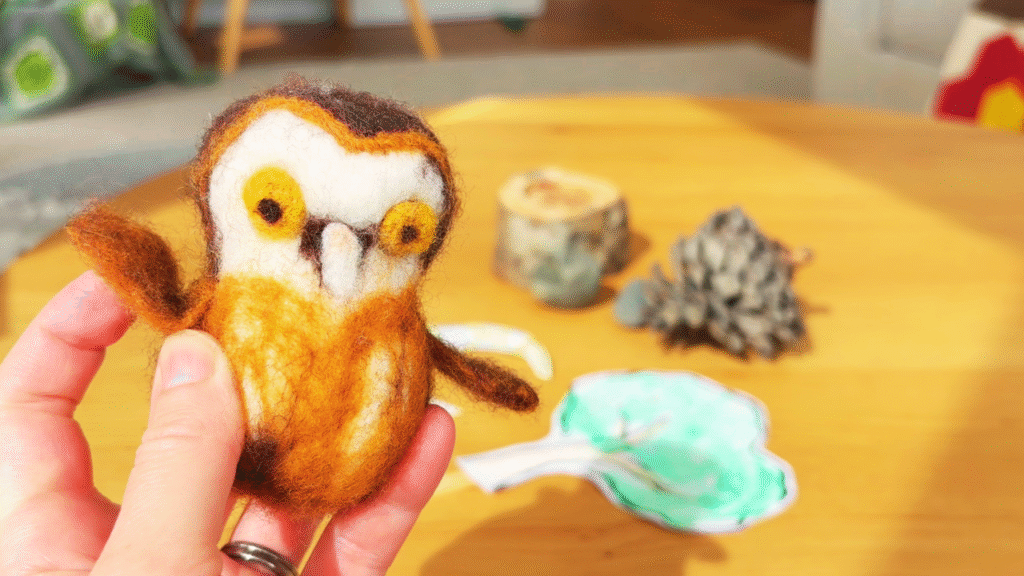
2. Nature Props
Nature provides the most versatile “toy box” for storytelling:
- A pinecone becomes a tree.
- A smooth stone becomes a mountain.
- A stick becomes a magic wand.
You can forage with your toddler, making the gathering part of the story preparation. This is a gentle way to weave rhythm into your week.
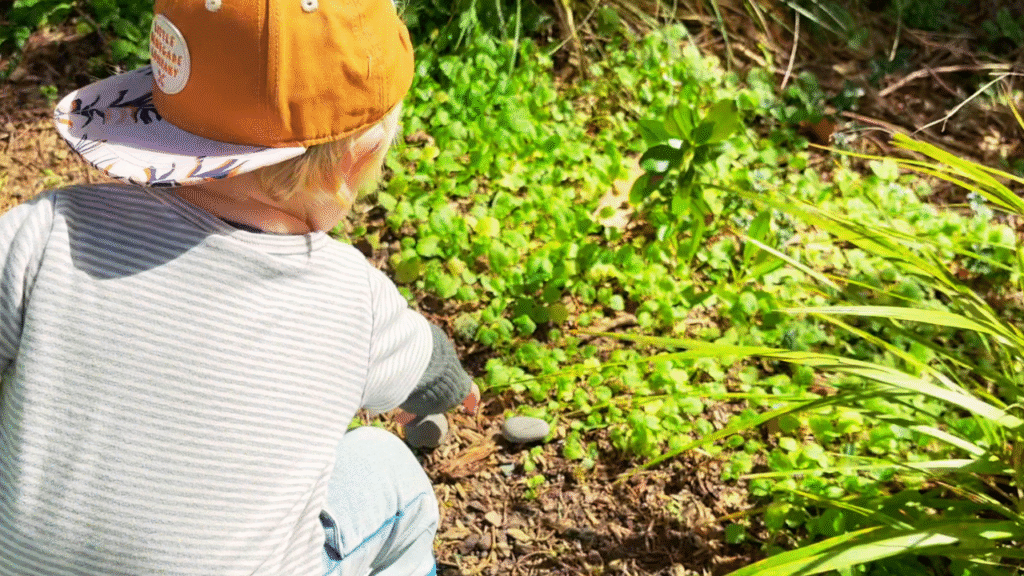
3. Printable Props
Not everything has to be handmade. I create printable puppets for storytelling in my curriculum products. You can print, color (or watercolor), and glue them to popsicle sticks. Ideas include:
- The moon
- A cricket
- A tree
These are quick to make, fun for toddlers to help decorate, and easy to keep in a storytelling basket.
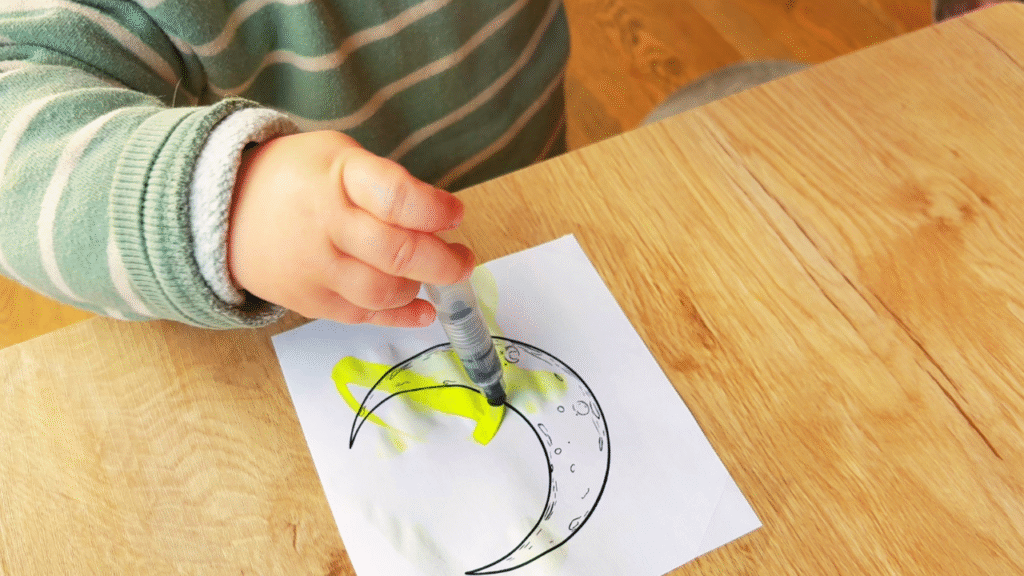
Example: The Little Owl Story
Here’s a simple story idea using a felted owl, a pinecone, a stone, and printable props:
“High in the tree sat a little owl. Every night, when the moon rose, Owl would open her eyes wide. She saw the grass hopper hopping around in the grass. She saw the stone shining in the moonlight. And she wondered what else the night might hold…”
You can adapt this story to your child’s rhythm, adding more verses or keeping it short for bedtime. The props give them a gentle visual to follow along.
Bringing Props into Your Weekly Rhythm
One of the best things about storytelling is that it fits naturally into family life. Here are some ways to anchor it:
- Morning basket time: Start the day with a short seasonal story.
- After outdoor play: Use found objects from your nature walk as story props.
- Evening wind-down: Repeat the same story for a week to build familiarity.
When you use props regularly, toddlers begin to associate them with rhythm. It’s grounding, calming, and joyful.
Making It Interactive for Toddlers
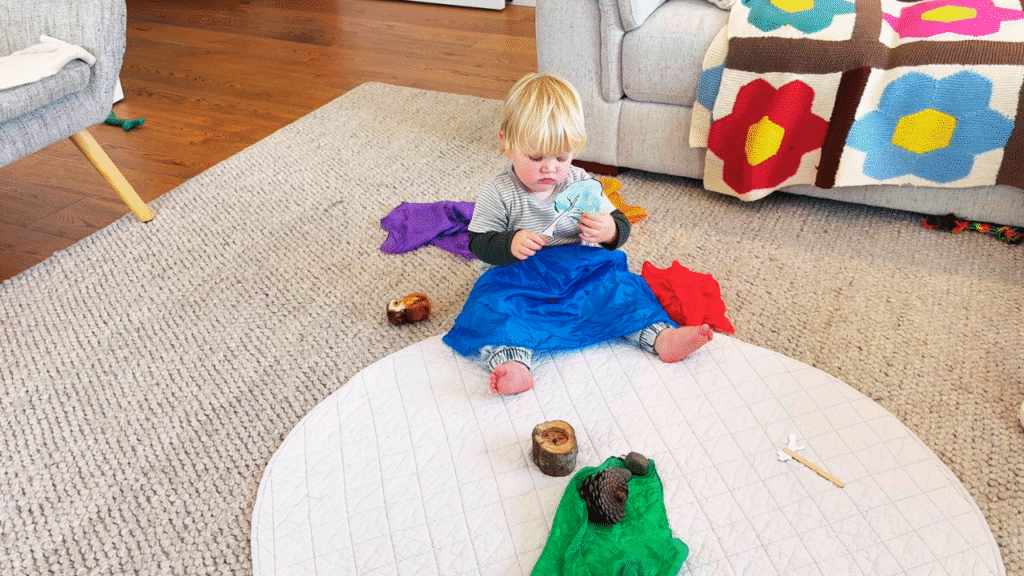
Toddlers love to participate. Here are simple ways to invite them in:
- Let them hold a prop during the story.
- Ask them to place the moon “in the sky” at the right moment.
- Encourage them to watercolor printable props ahead of time.
- Give them a turn retelling part of the story using the props.
This interaction strengthens memory, language, and confidence – all while keeping storytelling light and playful.
Tips for Getting Started with Waldorf Storytelling
If you’re new to storytelling with props, here are some practical tips:
- Keep it short – A toddler’s attention span is brief, so 2–3 minutes of story is enough.
- Repeat often – Tell the same story for several days. Repetition builds rhythm and comfort.
- Don’t overproduce – Your props don’t need to be perfect; their warmth matters more than detail.
- Set the mood – A candle or a soft piece of cloth under your props creates a simple storytelling space.
- Follow the season – Choose animals, plants, and imagery that match the time of year.
Remember, it’s not about performance. It’s about connection.
How to Bring Stories to Life for Toddlers Using Waldorf-Inspired Props
Bringing stories alive with props is simple, seasonal, and magical. Whether you handcraft a wool-felted owl, collect a pinecone from your backyard, or use a watercolor printable puppet, your toddler will feel the story come alive in their world.
This is the essence of how to bring stories to life for toddlers using Waldorf-inspired props: keep it simple, keep it soulful, and let your child’s imagination do the rest.
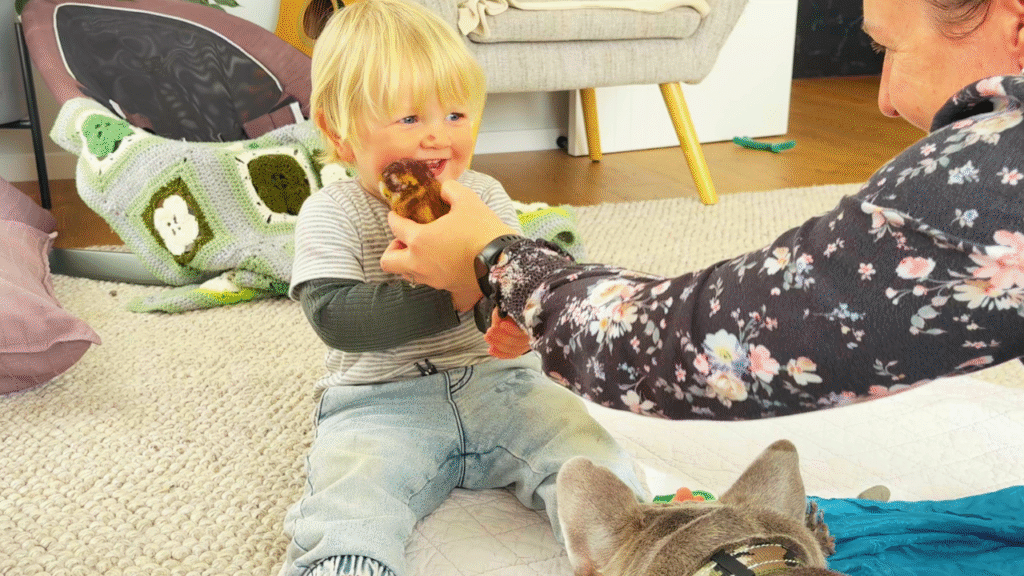
Ready to Create Your Own Storytelling Rhythm?
I’d love to help you get started!
- Watch the full Owl Storytelling video on my YouTube channel for inspiration.
- Explore my Seasonal Rhythms for Toddlers curriculum (coming soon!) for ready-to-use Waldorf-inspired stories, crafts, and songs.
- Join my newsletter for free tips on crafting your weekly flow.
- Download free Waldorf Storytelling Props printable for the templates that I used in this story.
Together, we can make your home rhythm gentle, seasonal, and full of magic.
Disclosure
This post may contain affiliate links. If you choose to make a purchase through one of these links, I may earn a small commission at no extra cost to you. Thank you for supporting my work and helping me continue to share free resources for families.

Leave a Reply